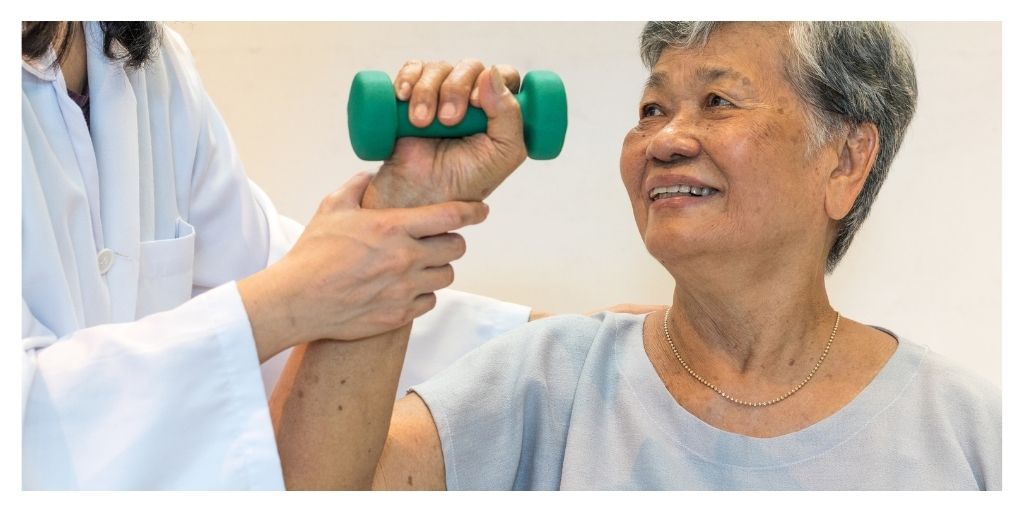Can Physical Therapy Help Manage Pain?
This post was last updated on October 26th, 2021

Patients suffering from temporary and chronic pain may undergo physical therapy. It includes post acute care performed by licensed and skilled nurses and physical therapists who work to help patients develop, regain, and maintain body movement.
This type of Rehabilitation Services offers complete inpatient care and are only given by the best healthcare providers. Physical therapy does help with treatment and pain management. Understanding how it works will provide more information about why it is highly recommended for certain patients.
Contents
ToggleWhy Physiotherapy?
Pain can either come from injuries or an existing and underlying disease. Some are temporary, while others are chronic and may last a lifetime. Health professionals would provide prescription drugs to help manage and treat pain, and this includes common painkillers.
However, it’s not always the best choice. Some patients develop allergic reactions from specific medication ingredients. Others may be taking other types of drugs that are not compatible with such medicines.
However, physical therapy is a good alternative for those who don’t want to take opioid painkillers. While opioid painkillers have been proven to be effective, abuse of the drug has become rampant and many patients got too dependent on them.
Therapy, on the other hand, includes various methods that are safer, holistic, and beneficial. One patient can try as many methods to find what works for him or her. These methods influence the body’s natural healing capacity and condition the body towards full recovery. Here you find the best physiotherapist in Sharjah.
Who Can Benefit from Physical Therapy
Physical therapy usually applies to patients who have the following afflictions:
- Back pain
- Knee and leg pain
- Osteoarthritis
- Fibromyalgia
- Neuropathic pain
- Rheumatoid arthritis
Pain may also be caused by deliberate, forceful movements or sudden impacts like car accidents. It can be temporary or progress to a lifetime, depending on the intensity. The nerves, muscles, and ligaments tear up. In severe cases, bones can break or fracture. Physical therapy can help rehabilitate the limbs and bring back normalcy into a patient’s body movements, especially after trauma.
Athletes usually experience the wear and tear of joints and muscles due to strenuous training activities. Elders experience this too because old age contributes to the deterioration of joints that can make them stiff. Therefore, athletes and elders can also benefit from physical therapy.
Various Ways of Physical Therapy
Physical therapy includes various methods that can directly influence the body. Some of these are:
- Hot and cold compresses
- Medicated baths
- Cupping
- Acupuncture
- Electronic, manual, or tool-based massages
- Stretching exercises
- Water ballet
- Low-impact aerobics
- Cold laser therapy
These are just some of the common methods that a licensed therapist, healthcare professional, or even a family member can help you with. The good thing about physical therapy is that you can still do various exercises at home. You can do it anytime you wish to help yourself recover faster. You can exercise in your living room, at the park, the beach or anywhere else so you’ll also have a change of scenery.

What You Can Expect at A Therapy Session
If you haven’t been to physical therapy yet, you can expect your therapist to first stretch your muscles and stiff joints at the start of the session. He or she will ask you relevant questions during the session. They may be about your medical history, possible causes of your pain, and how it may affect your daily life.
The therapist will also perform tests to determine your heart rate, range of motion, strength, and balance. It will help him or her devise a treatment and pain management plan that’s best for you. They would also collaborate with your physician to come up with the best medical-based intervention. You may also be given a combination of medication and therapy that includes treating inflammation. Ample rest is also mandatory to help your body recover steadily.
Pain Management That’s Right for You
Part of physical therapy is learning how to bear the pain while regaining the freedom of movement. Pain can be incapacitating, and it would often keep you lying down on your bed. However, you will experience more pain if you don’t try to move around.
Getting your body accustomed to specific exercises will help you deal with pain as you move daily. Eventually, you’ll find yourself get stronger and able to cope.
What you must remember is that physical therapy alone cannot treat everything. Your joints, muscles, and nerves may respond to different methods. Patients suffering from the same injuries may also experience relief in other ways that are different from yours. In other words, physical therapy is just one part of a complete therapeutic and healing routine.
In Conclusion
Physical therapy can relieve or manage pain in various ways. It is one of the safest ways to deal with acute and chronic pain. There are many kinds of therapeutic methods that you can try and you can observe which one helps you deal with pain in the best way possible. However, physical therapy can’t do much if you don’t have the discipline to follow medical advice. You also need to cooperate with your routine so you can gain back your strength in no time.
Recommended For You
CBD and Drug Tests: How to Pass A Drug Test Even After Taking CBD
Most Inside
Most Inside offers high-quality recommendations and valuable updates to enhance all aspects of your life, providing premium guidance and enriching experiences.





